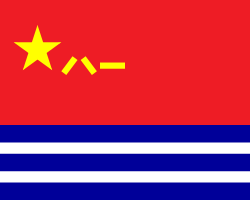| Southern Theater Command Navy | |
|---|---|
 The People's Liberation Army Navy's jack and ensign | |
| Active | 1955–present |
| Country | China |
| Allegiance | Chinese Communist Party |
| Branch | People's Liberation Army Navy |
| Type | Naval fleet |
| Part of | Southern Theater Command |
| Garrison/HQ | Zhanjiang, China |
| Engagements | Battle of the Paracel Islands |
The Southern Theater Command Navy (STCN), or the South Sea Fleet (SSF) until 2018, [1] is a formation of China's People's Liberation Army Navy (PLAN) and the naval component of the Southern Theater Command. [2]
